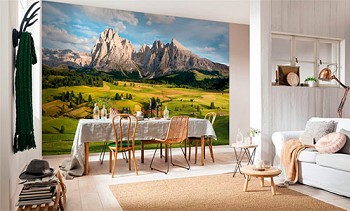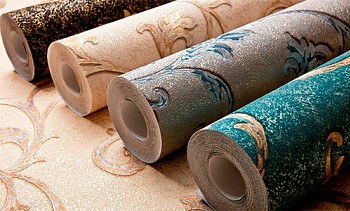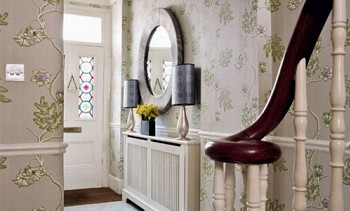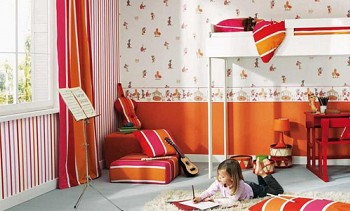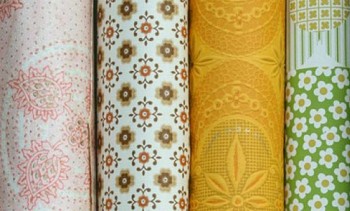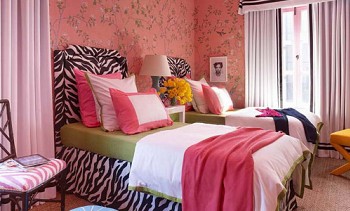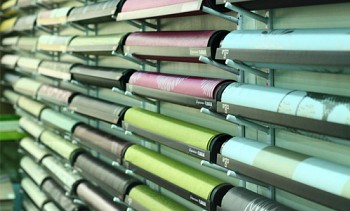Liquid wallpaper: advantages and disadvantages of modern material
More and more people around the world, choosing material for decorative wall decoration, prefer liquid wallpaper. They are also gaining popularity in our country: a lot of enthusiastic reviews from those who have already tried or just saw somewhere, a lot of heated debate on thematic forums ... However, in order not to follow blindly fashion when choosing a finishing material, you need to get to know this coating of a new generation more closely, to find out about all the pros and cons of liquid wallpaper, and based on this, draw conclusions and make a decision.
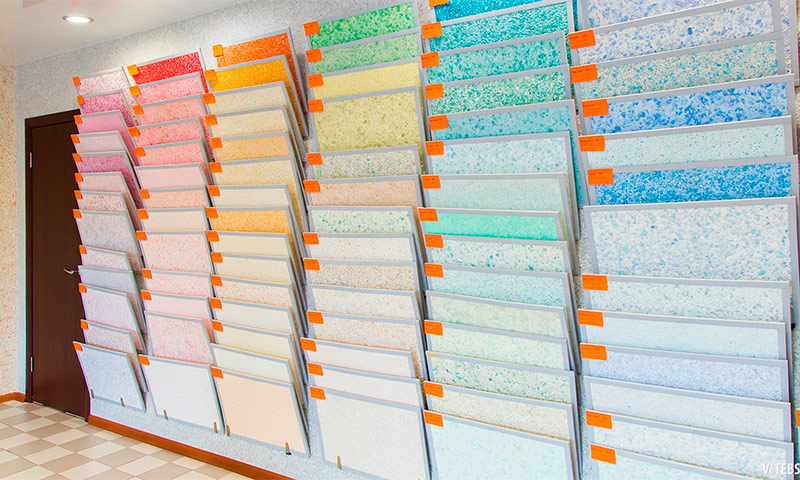
Content:
What is liquid wallpaper and what are their features
Liquid wallpaper is a material for finishing walls, a cross between paper wallpaper and decorative plaster. Although the name “wallpaper” is present in the name of this finishing material, you will not see the usual rolls, since in the initial state it is a dry, loose substance that you have to dilute with water. Liquid wall-paper differs from the Venetian plaster with which many are unknowingly confused by the absence of large fractions of sand, the presence of cellulose fibers, as well as a thin coating layer.
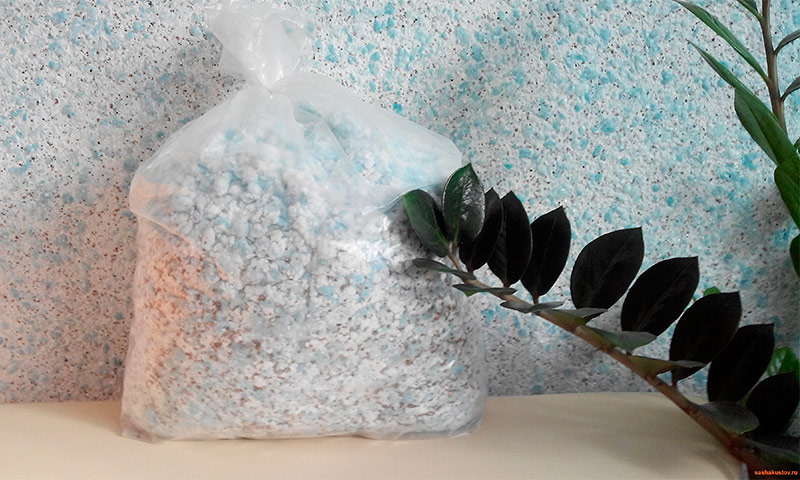
In addition to cellulose, which we have already mentioned, the composition of liquid wallpaper includes cotton or silk fibers, adhesives (usually carboxymethyl cellulose), water dispersible dyes, fungicides that protect natural fibers from fungi and mold, thickeners and plasticizers, as well as components that change decorative properties of the coating (particles of minerals of different fractions, small balls of polymers, mica grains, wool fibers, dry algae, etc.).
The advantages of liquid wallpaper
Why do we need another decorative finishing material with such a variety of existing ones? When you find out how many advantages a liquid wallpaper has, this question will disappear for you by itself.
Ease of application
Covering the walls with liquid wallpaper is not a particularly difficult process. Superqualification is not required from you. Moreover, you can do this job even without an assistant. All you have to do is to prepare a working solution from a dry mixture and water, and then apply the resulting plastic mass to the wall and smooth it with a spatula. You must admit that this is much easier than cutting the rolls, lubricating the obtained strips with glue, sculpting them together with a partner on the wall, leveling and adjusting the pattern, “dispersing” the bubbles and smoothing the folds. Admit it, it is unlikely that you ever managed to stick a rolled wallpaper without cursing constantly.
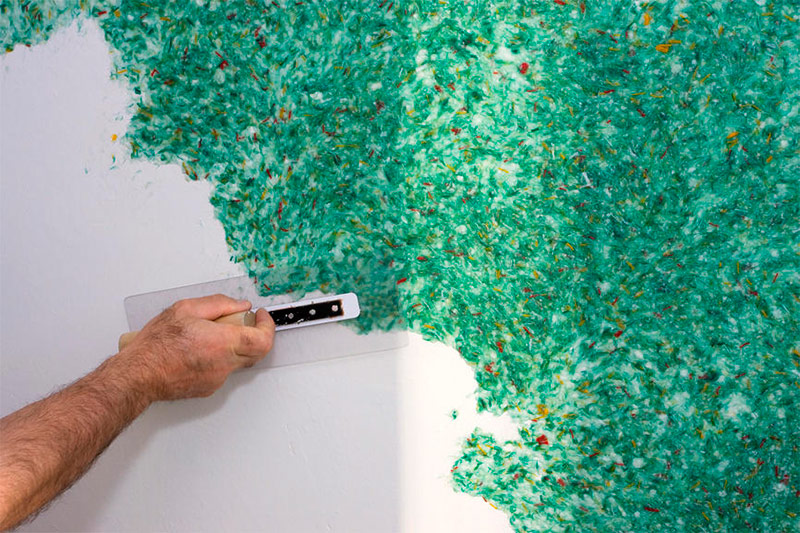
Resistance to drafts
So that ordinary paper wallpaper does not move away from the wall in the first day after gluing, you must tightly close all the windows in the house. But to be in an unventilated room, where repair work is actively being carried out, is sometimes very difficult. Choosing a liquid wallpaper, you will save yourself from such a problem. They are not afraid of drafts! Moreover, airing the room will benefit the material deposited on the wall, since it will accelerate the drying process.
Coating Seamlessness
Unlike rolled wallpaper, liquid coat the wall with a monolithic layer, without seams and joints. Such a coating not only looks more aesthetically pleasing, but also retains its original appearance for longer, as it has greater strength.
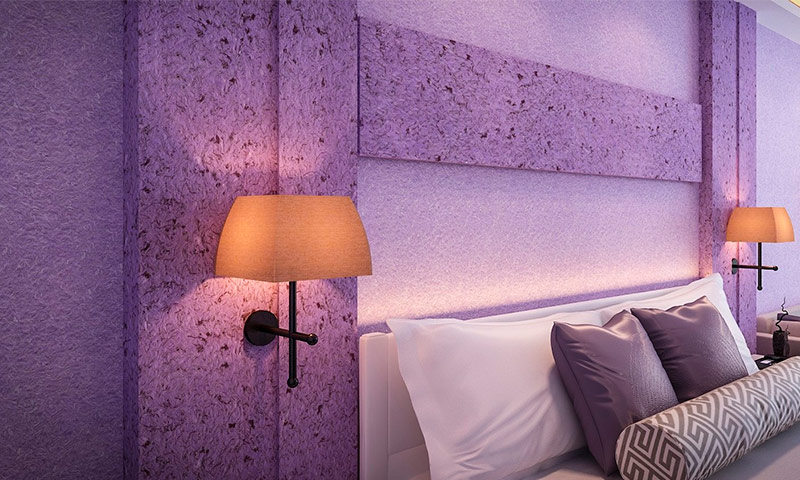
Environmental friendliness
The composition of liquid wallpaper does not include any synthetic additives, all components are exclusively natural. As a result, this material is environmentally very clean. During its operation, no substances harmful to health are emitted. The coating has no smell, and it does not absorb extraneous odors from the outside either.In addition, liquid wallpaper, being a "breathing" material, does not create the effect of a greenhouse and ensure the maintenance of a comfortable microclimate in the room. The environmental friendliness of liquid wallpaper is one of its greatest advantages when choosing a finishing material for a children's room.
Application on curved surfaces
Liquid wallpaper is perfect for curved surfaces - decorative arches, columns and other curly elements of the interior. Roughness of the surface is not a problem for those who work with this material, except for the fact that the application speed is slightly reduced.
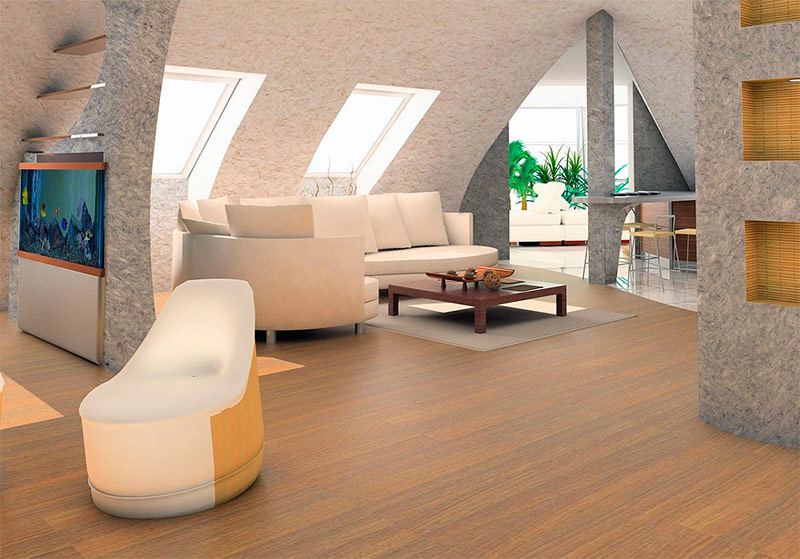
Plastic
Unlike many other finishing materials, liquid wallpapers with good ductility do not crack and do not leave the wall when the house shrinks. This feature of the material will be appreciated by the owners of apartments in new buildings.
Antistatic
Due to the absence of synthetic additives in the composition of liquid wallpaper, they have antistatic properties, which means that they do not attract dust.
High sound absorption
Liquid wallpaper, due to its porous structure, is able to absorb noise. Of course, they cannot guarantee perfect silence, but they are quite capable of reducing the level of extraneous noise by 10-15%. In addition, they prevent the appearance of echoes in the room.
Frost resistance
Due to its structure, liquid wallpaper has significant frost resistance. This property of the material contributes to a significant expansion of its scope: liquid wallpaper can be applied even on non-insulated (but glazed!) Loggias.
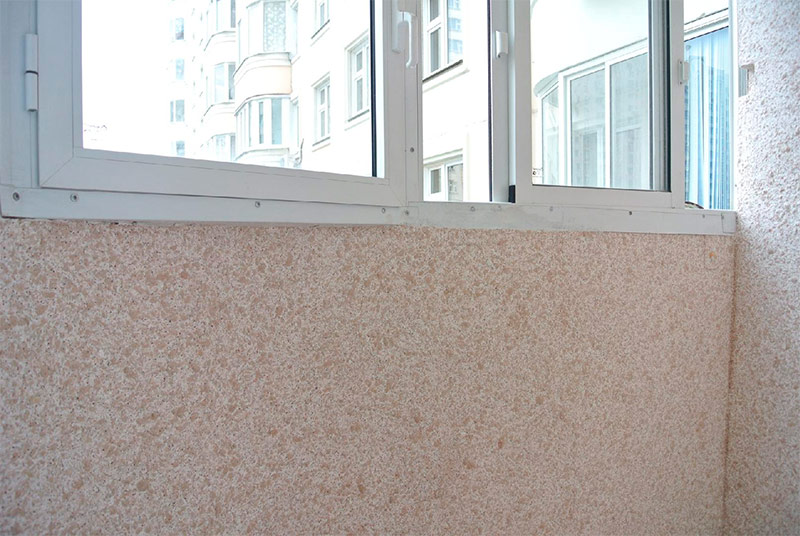
Thermal insulation
The finely porous structure of the liquid wallpaper provides the thermal insulation properties of this decorative material. However, do not hope that liquid wallpaper will significantly reduce the thermal conductivity of the walls. Given the fact that the thickness of their application rarely exceeds 2-3 mm, they can serve only as an addition to more effective heat insulators. But, it should be recognized, the concrete wall when applied to it with liquid wallpaper to the touch becomes warmer.
Fire safety
Unlike vinyl or non-woven wallpaper, oil paint, plastic wall panels and many other decorative materials for wall decoration, liquid wallpapers do not support combustion and do not emit hazardous chemicals when exposed to high temperatures. Often, flame retardants are added to the composition of liquid wallpaper.
Maintainability
Sooner or later, traces of exploitation appear on the wallpaper - tears, scratches, abrasions. Especially severely affected are places near sockets and switches, walls in the hallway. Unlike ordinary roll wallpaper, paper or non-woven, liquid can be repaired fragmentarily. It is enough to soak the material in the damaged area, remove the layer of liquid wallpaper and make a “patch”. After drying, its color will equal the main background, and the place of repair will not be noticeable. In case of minor defects, you can not even make a patch, but gently rub the soaked material on the wall. A similar property of liquid wallpaper, for sure, will be highly appreciated by pet owners and parents of young children.
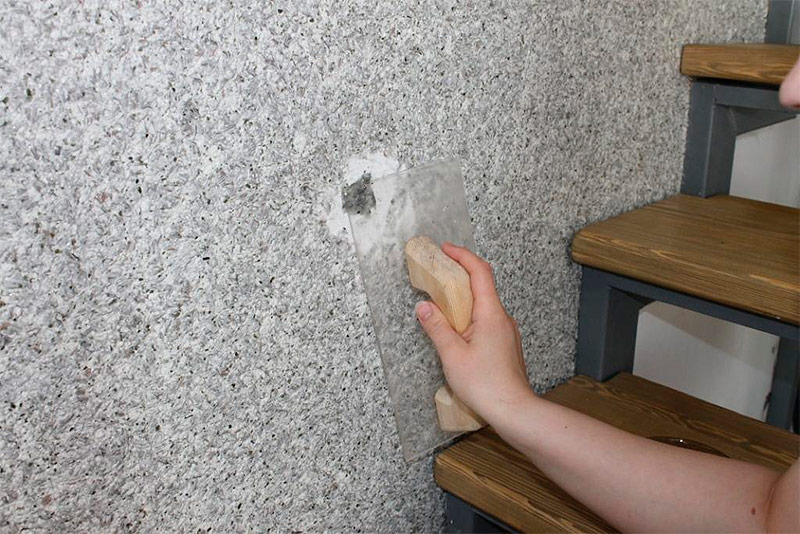
Color fastness
Liquid wallpapers, and especially those containing silk fiber, are characterized by increased resistance to ultraviolet: they do not fade under the influence of sunlight, preserving the original brightness and saturation of shades for many years.
A large assortment
The rich color palette of liquid wallpapers available today for sale allows you to use them in rooms decorated in almost any style. In the catalogs of leading manufacturers you can find up to 2-3 hundred available colors - from calm pastel and office-restrained to bright and rich.
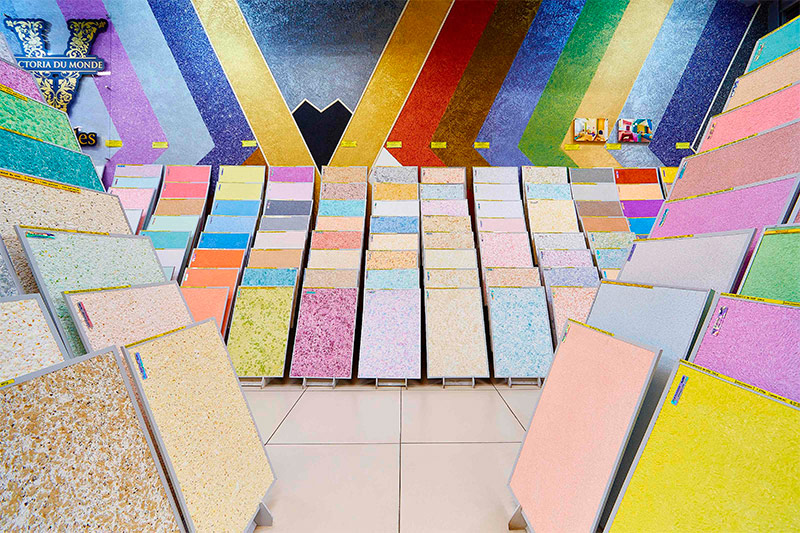
However, many consumers prefer to purchase a semi-finished product - the so-called "base", which can be tinted independently, choosing a hue and color saturation to your liking.Often, not only dye is injected into the base, but also a variety of decorative components, eventually obtaining a coating that is unique in its color scheme and embossment. If desired, you can create a real panel on the wall using liquid wallpaper with different textures and colors in different areas.
Cons of liquid wallpaper
Why, with such a huge number of advantages, liquid wallpaper did not become leaders in the market of materials for decorative wall decoration? Firstly, this is still a relatively new material, and the consumer does not have confidence in it, based on their own experience. Secondly, along with the undoubted advantages of liquid wallpaper, there are a number of disadvantages that for some potential users may be significant.
Price
Liquid wallpaper is not the cheapest material used for decorative wall decoration. However, it should be recognized that over the years the market situation is gradually changing. The increase in sales of this material, as well as the establishment of its production at domestic plants, leads to a gradual decrease in cost: today liquid wallpaper can be purchased even at a price of 100-120 rubles per square meter.
In fairness, it is worth noting that applying liquid wallpaper does not require preliminary perfect alignment of the walls. The exclusion of this expensive procedure from the list of required leads to lower costs. As a result, at the cost of the final result, liquid wallpaper can in some cases be equal to ordinary ones.
The complexity of calculating material consumption
Estimating the amount of material that you need, and therefore the final cost of finishing, in the case of using liquid wallpaper can be quite difficult. The figure strongly depends on both the quality of the substrate and the application technique. The consumption of material increases in the presence of all kinds of pits, cracks and other irregularities in the wall, as well as when applied to curved surfaces (columns, arches, etc.). But even on even walls, applying a layer of the recommended thickness is not an easy task. Not every novice master can do it - here, as they say, you need to fill your hand.
Drying time
Liquid wallpaper after applying to the wall for complete drying takes 2-4 days, depending on the temperature and humidity in the room. This leads to an increase in the total duration of the finishing work. However, in some cases, this lack of liquid wallpaper can be considered as a virtue. Those who do not have much experience in applying such material will have enough time to fix flaws that were not noticed immediately.
Spot Vulnerability
If you do not pay enough attention to the process of preparing the base, for example, use unsuitable materials, do not level the color of the base, do not remove the old coating (wallpaper, paint, whitewash) and existing metal fasteners, stains can appear on the decorative coating over time, which will greatly damage the exterior type of finish. The source of contamination may be the material of the wall and the material of its rough finish.
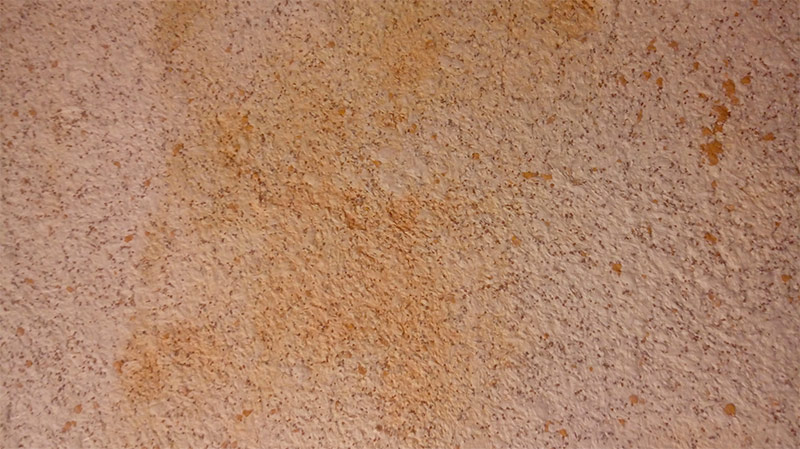
Moisture sensitive
Liquid wallpaper is not intended for rooms with high humidity, and this is their main drawback. This is not even a drawback, but simply a feature of the material, which must be taken into account at the stage of deciding on the type of finish used. If you still decide to use liquid wallpaper to decorate the walls in the bathroom or in the kitchen, skip at least surfaces that come in direct contact with water. You can, of course, treat the coating with water-repellent, but at the same time it will lose many of its valuable properties - vapor permeability, resistance to cracking, maintainability.
When preparing walls for liquid wallpaper, it is mandatory to use moisture-proof soil. If you neglect this recommendation, extraneous stains may appear on the surface of the decorative finish over time.
In addition, the consequence of the increased sensitivity of liquid wallpaper to moisture is the only affordable way to care for the finished coating - dry cleaning.

